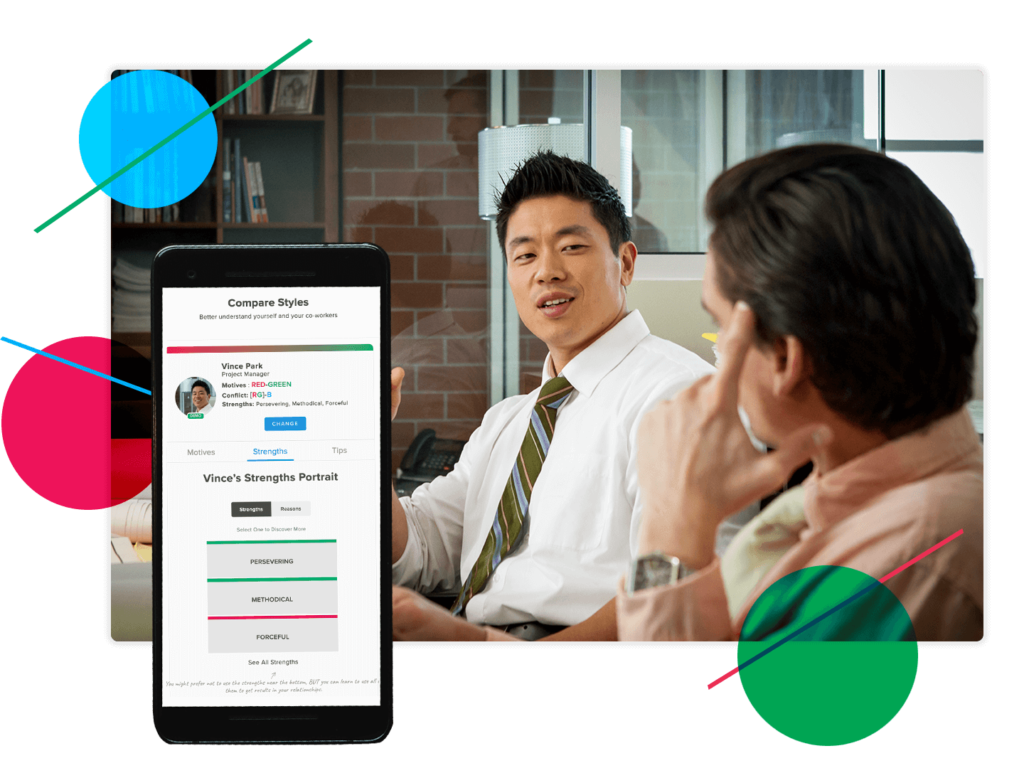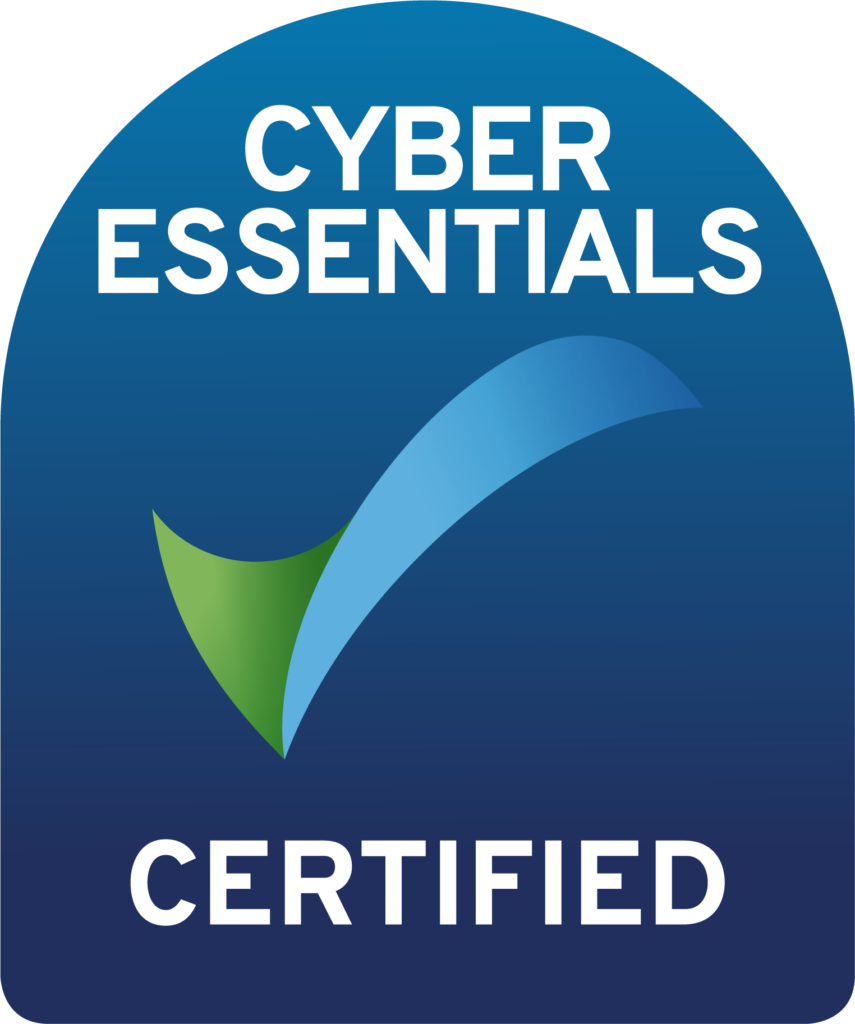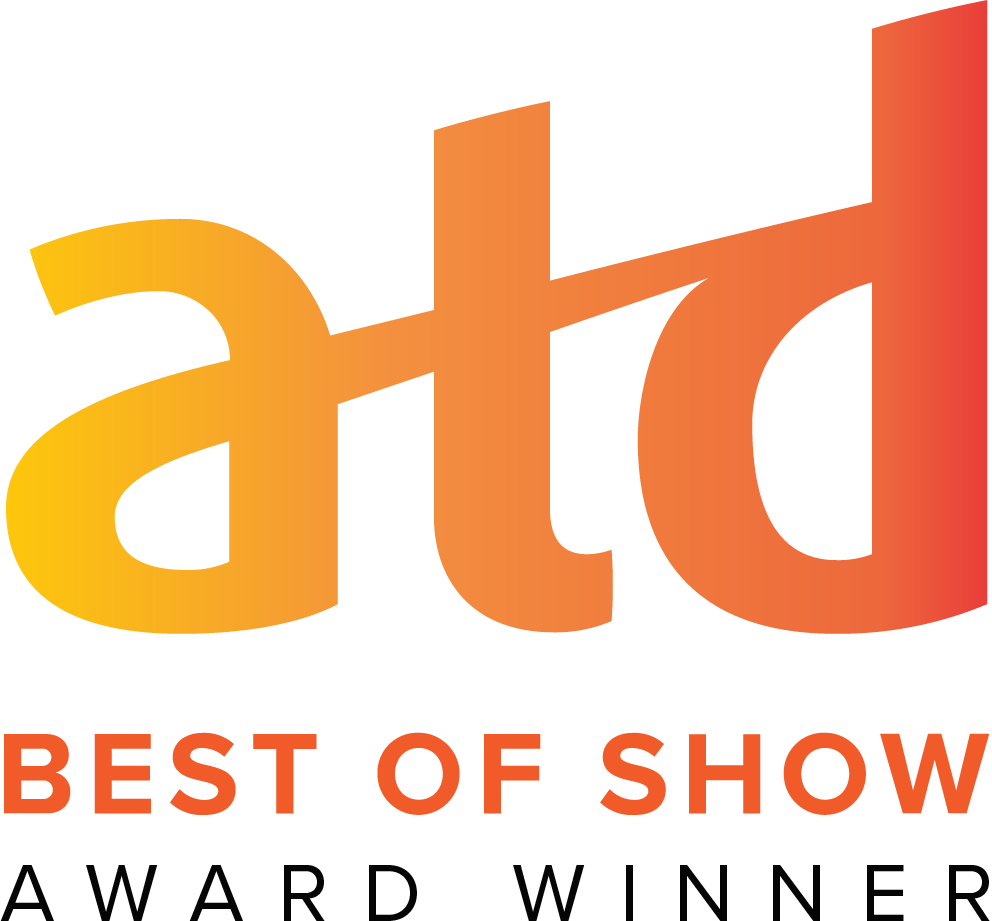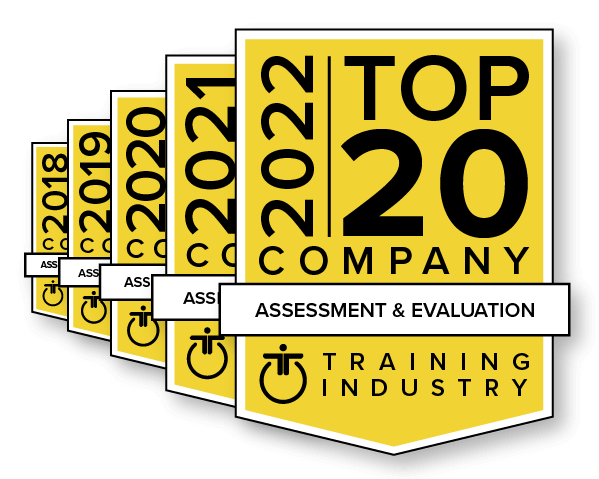Learn what makes a successful workplace coaching relationship.
Coaching has been a hot topic in workplace thought leadership for several years now, and its benefits are widely agreed upon. The Institute of Coaching at Harvard McLean reports the following impressive stats:
- 80% of people who receive coaching report increased self-confidence
- Over 70% of people who receive coaching benefit from improved work performance, relationships, and more effective communication skills
- 86% of companies report that they recouped their investment on coaching and more
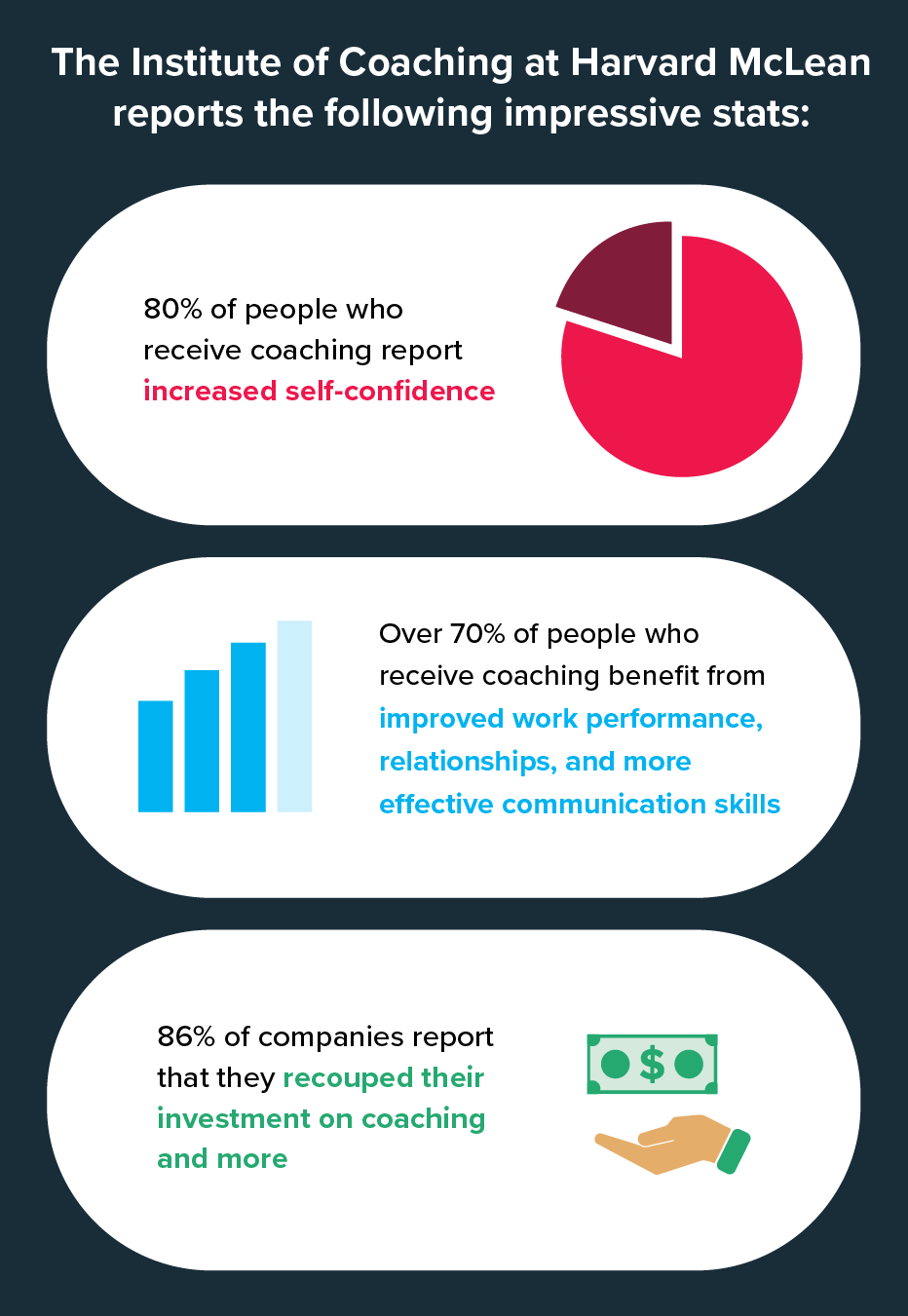
But what is coaching in the workplace? And what makes it so effective? Here’s how Core Strengths defines coaching and the components of a successful coaching relationship.
The definition of coaching in the workplace
Coaching is a relationship.
There are two people involved in a coaching relationship:
- Coach (Team Leader): A Team Leader who has responsibility for the development and performance of one or more people.
- Coachee (Team Member): A person who interacts with an assigned Team Leader with the expectation of benefitting through personal development and the ability to achieve better results at work.
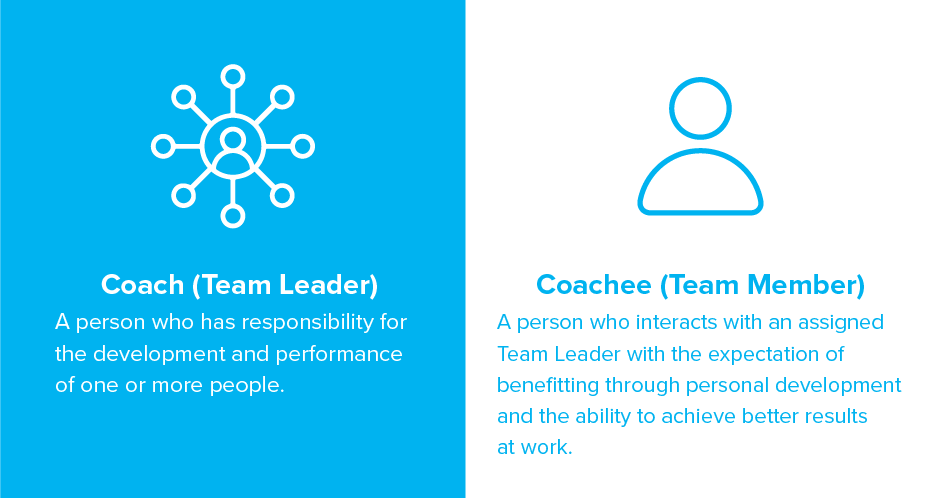
While the manager and employee have many types of interactions in the workplace, in their roles as coach and coachee, they have three primary interactions:
- Coaching: A relationship between a Team Leader and Team Member that is intended to develop both people and improve workplace performance.
- Coachable Moment: An unplanned coaching interaction that occurs during the course of daily work.
- Coaching Conversation: A structured conversation between a Team Leader and Team Member. One of a series of regularly scheduled interactions between a Team Leader and Team Member.
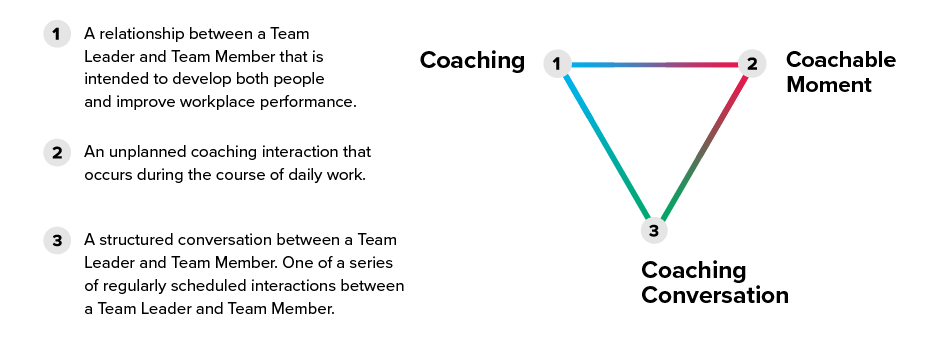
There should be a regular rhythm to the structured coaching conversations. These development-focused one-on-ones should have an agenda that both parties know about ahead of time, and perhaps a curriculum for teaching a new skill.
Often, the team leader is tempted to focus on skill development with the sole purpose of driving performance, but they also need to address the relationship dynamics on the team to empower and support each team member and reap the full benefits of coaching.
Between scheduled coaching conversations, there will be many opportunities for informal coachable moments. When both the team leader and team member have a positive mindset toward the relationship, they’ll seek each other out for frequent coachable moments.
Over time, people will begin to coach themselves. They’ll ask themselves the same questions their team leader might ask them. That’s why coaching is such an effective way to build the management pipeline. Once a team member becomes fluent in the language of coaching, they’re on their way to being ready to become a formal team leader.
Why is the manager the best coach in the workplace?
The manager often has more contact with their direct reports than anyone else in the workplace. But there might be multiple people who coach one individual: their manager, their mentor(s), their sponsor(s), and more.
The manager might not be an inherently gifted coach. But all managers should have the opportunity to learn to be effective coaches. If they’re hesitant to coach for any reason, then over time they will have a negative impact on individuals, their teams, and ultimately, the organization
The mindset required for coaching is largely left out of training programs for team leaders, and that’s a key component in effective coaching. To learn more about the coaching mindset, read our blog, “How to Make Coaching in the Workplace Actually Work.”
How to improve coaching relationships in the workplace
You can improve coaching relationships with what Core Strengths calls Relationship Intelligence (RQ): insight for adjusting one’s approach to make interactions more effective.
This chart outlines the components of RQ:
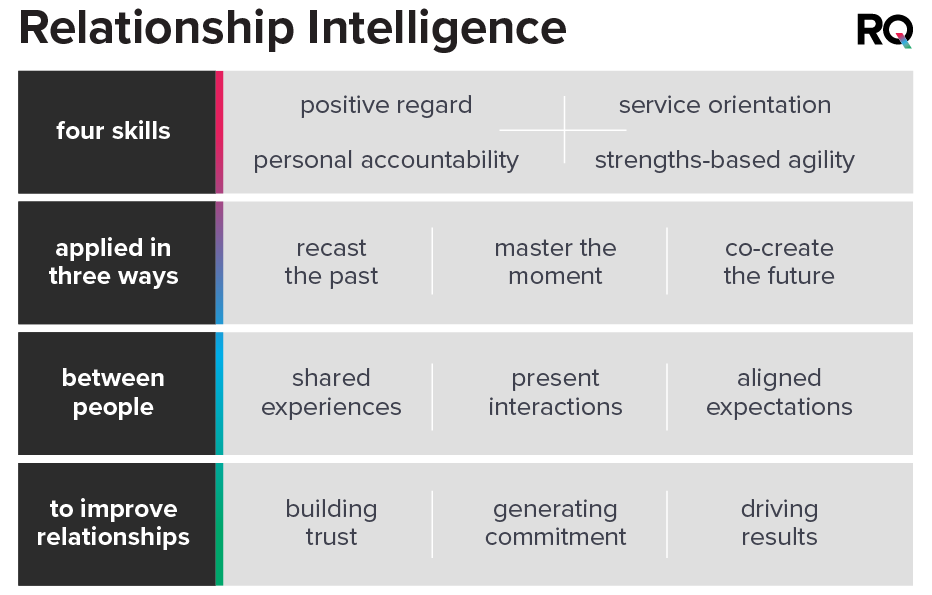
The RQ-powered approach to coaching recognizes that there is a two-sided contract between team leader and the team member, i.e., a relationship. The goals, motivations, strengths, and biases of both must be taken into account for the coaching relationship to be successful.
What does a successful coaching relationship look like?
If you look at the above RQ model from the bottom up, you get the components to build a successful coaching relationship.
- An effective coaching relationship builds trust, generates commitment, and drives results (fourth row)
- As with any relationship, we need to acknowledge there are shared experiences, present interactions, and aligned expectations (third row)
- To make those experiences, interactions, and expectations productive, we use the four skills of positive regard, service orientation, personal accountability, and strengths-based agility (first row)
- If they’re not productive, we can improve them by recasting the past, mastering the moment, and co-creating the future (second row).
Depending on the person and their individual context and life experiences, positive regard, service orientation, personal accountability, and strengths-based agility could mean different things. Two people can have unique challenges in terms of maintaining positive regard or retaining a service orientation in the coaching relationship. That’s why one manager will have unique coaching relationships with all of their team members while still maintaining their authenticity and integrity.
The tools and technologies for coaching in the workplace
The RQ chart and this way of thinking about coaching relationships introduces some terms and concepts that may be unfamiliar. Core Strengths has many resources for understanding these concepts and bringing them to life in your workplace.
- Offer the SDI 2.0 assessment to everyone in your workplace so they can gain better awareness of their own strengths and motivations, and those of their colleagues.
- Offer Results Through Relationships training so both team leaders and the people they coach can build the skills required for successful coaching relationships.
- Offer the Core Strengths platform, an at-your-fingertips portal for improving workplace relationships—coaching relationships and otherwise.

